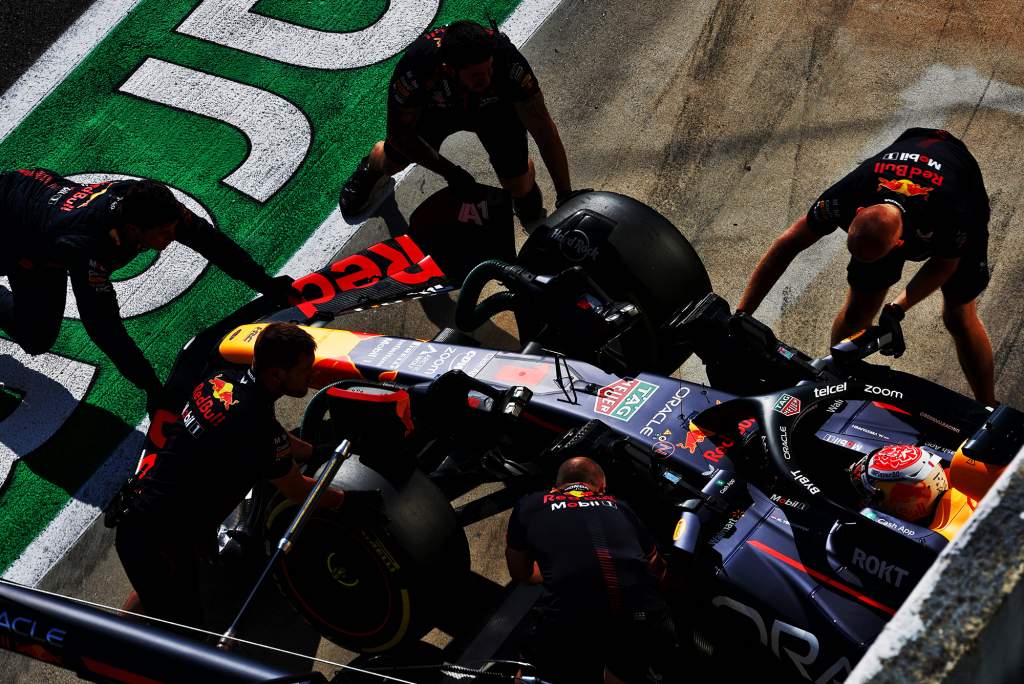Up Next

The Red Bull Formula 1 team’s Hungarian Grand Prix upgrade declaration read like it was totally based on the cooling requirements for this low-speed track.
The fact there’s an improvement in aerodynamic load and a potential drag reduction, not to mention a benefit in terms of consistency when the radiator inlet spillage happens, is just a consequence of the radiator inlet cooling change.
Yeah, right – Red Bull will have been very well aware of those performance advantages.
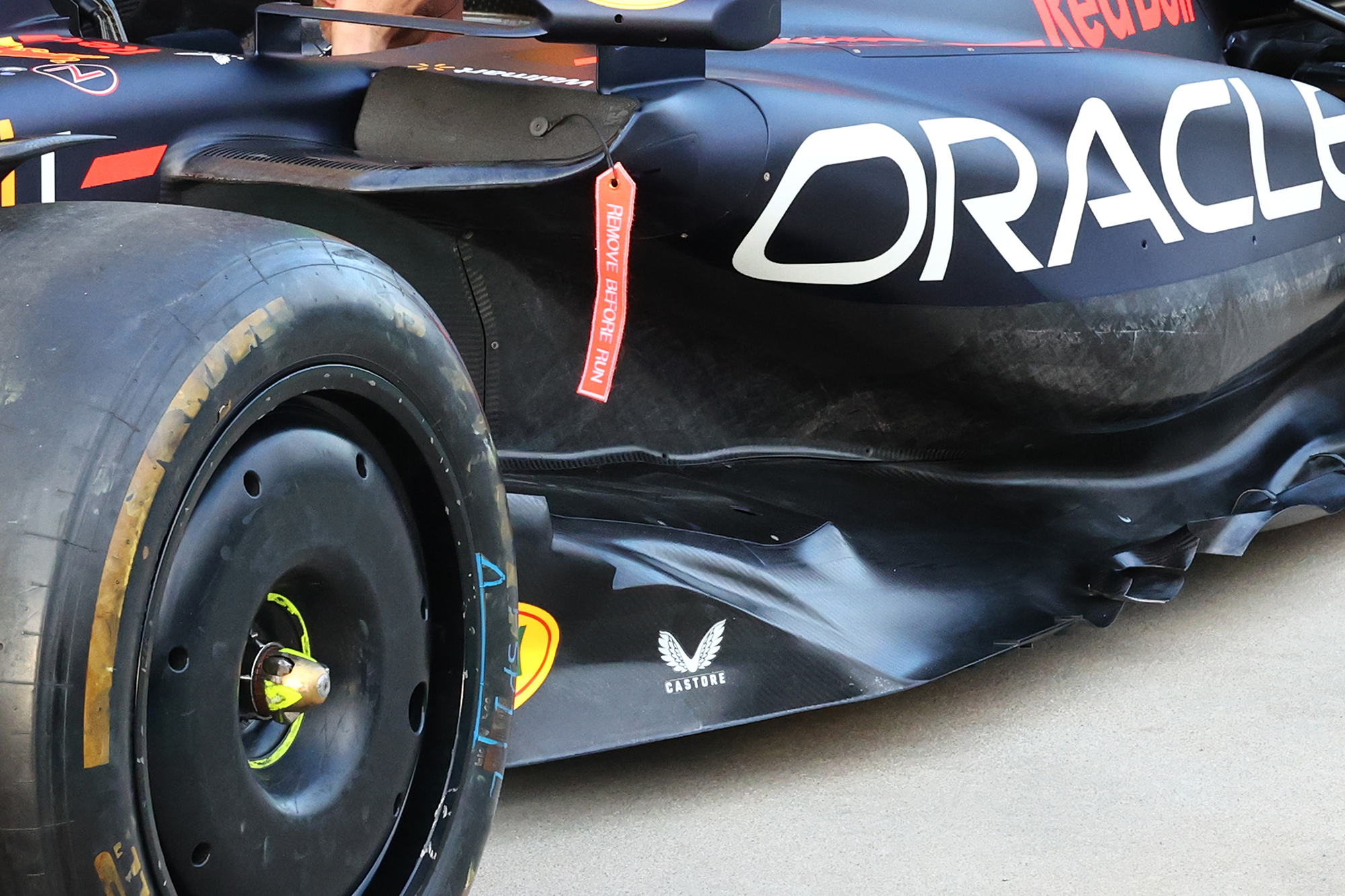
There’s a reason Red Bull might have chosen to invest in this both in this update and with the previous sidepod change in Baku. The aerodynamic testing restrictions exempt “windtunnel testing solely for the development of power unit heat exchangers that reject heat to air”, which means you can do work with the internal flow of these ducts. A similar exemption applies to brake system development.
That’s not a criticism of what Red Bull’s done or a complaint about a loophole. It’s what the regulations say and Red Bull is wise to take this opportunity. That’s what F1 is all about.
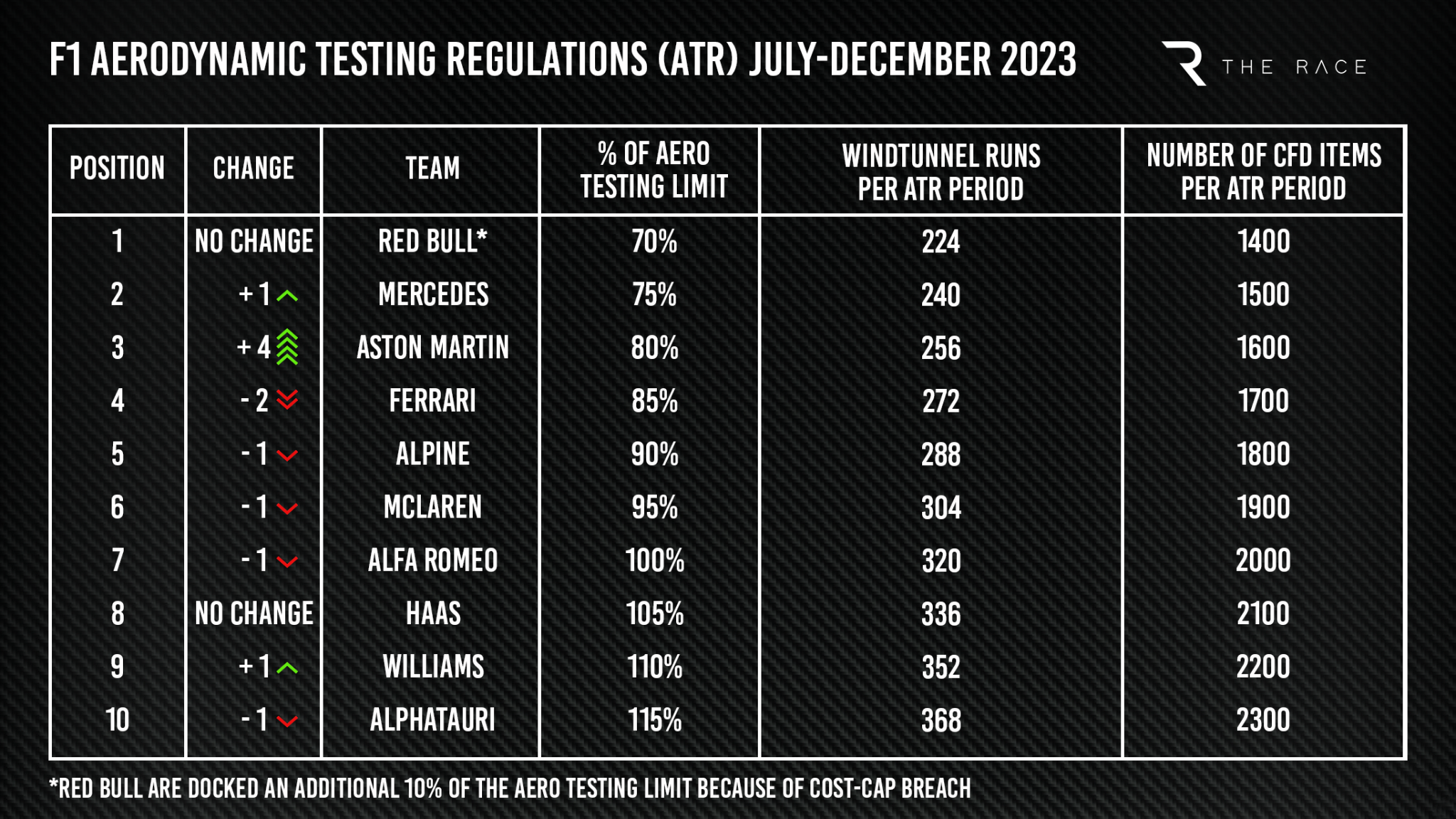
Let’s have a look at the package in more detail. First of all, this is how Red Bull’s declaration of changes read. Note that the first four all list reliability in the mandatory ‘primary reason for upgrade’ column, again hinting at the way it is working within the ATR restrictions.
1 Front Corner
– Reliability
– Enlarged front brake duct exit
– Enlarged exit to cope with the greater brake energy and low average speed of the Hungarian Grand Prix circuit.
2 Rear Corner
– Reliability
– Enlarged rear brake duct exit with additional winglets
– Enlarged rear brake duct exit for more cooling with winglets to add some local load and improve the exit condition suited the requirements of brake cooling at the Hungarian circuit.
3 Sidepod Inlet
– Reliability
– A broader and shallower inlet to achieve a further increase of the aspect ratio
– Changing the aspect ratio of the inlet has improved the pressure at the entry to the radiator duct and therefore the cooling efficiency ahead of one of the more difficult circuits for car cooling.
4 Coke/Engine Cover
– Reliability. Wider side-pod from the inlet extending to the rear suspension forward legs
– Having revised the inlet duct a wider sidepod panel was necessary and utilises the greater inlet pressure to exploit the inlet improvements. This extends to the rear suspension and revises the cooling air exit path.
5 Floor Body
– Performance – Local Load
– Revised split line to revised sidepod, floor edge detail revised to suit.
– The reshaped sidepod has led to subtle floor edges changes to work with the upstream surfaces, which has extracted some more local load.
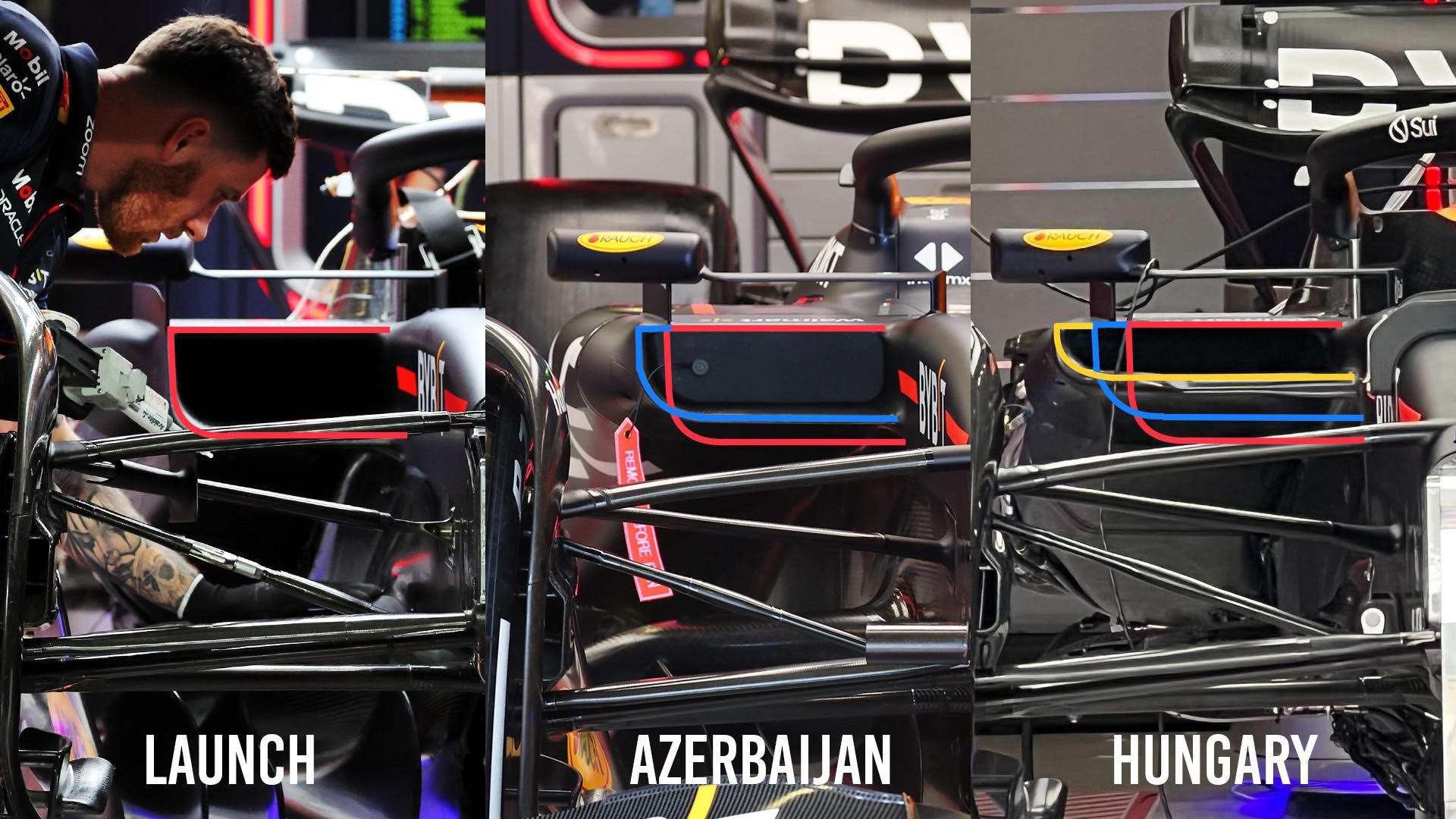
There are three radiator inlet packages from this year. As you can see, the open area is not too different, it just gets wider and shallower to become more of a letterbox shape than a ‘shoebox’ opening.
The top surface of the inlet has always been further rearward than the lower surface and this shallower inlet has allowed Red Bull to blend the sidewall of the inlet duct into the sidepod surface more sympathetically.
To show these changes more clearly I have traced an overlay on each of the three key stages. Red indicates the start of the season, then blue for the package introduced in Azerbaijan in April, and finally yellow for Hungary.
The upper surface has stayed more or less at the same height and longitudinal position. This is as high as the regulations allow in this area or it would probably be higher. But it’s the bottom surface Red Bull has focused on.
As mentioned in item four above, Red Bull also increased the exit duct for the cooling system. This is in line with what you need to do for a slow-speed circuit like Hungary.
Others have opened up the louvre-style exits on their cars because you can’t simply push more airflow through the cooling system, you have to pull it through using larger exits.
Moving this lower surface upwards allows the airflow that is coming off the lower surface of the front wing, which is illustrated with the green arrows in the diagram below, to pass along the sidepod undercut.
This flow has already been beaten around – effectively made more turbulent and less dense – by producing front downforce and finding a way through the front suspension members. So it is weaker than the flow that is coming off the top surface of the front wing, which is illustrated by the heavier red arrows.
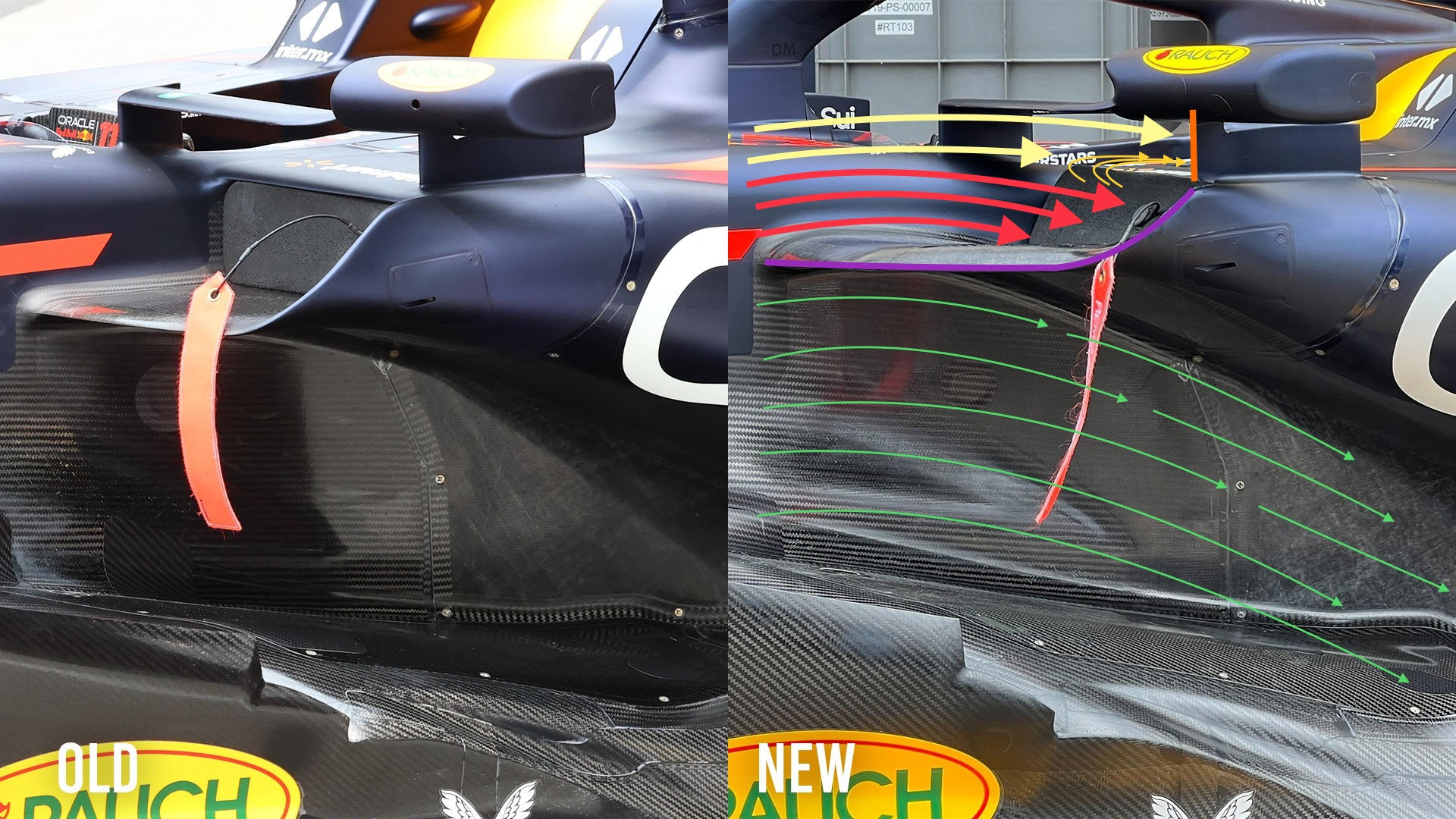
The lower-speed nature of the Hungaroring means there won’t be much airflow spillage from the radiator. By spillage I mean what happens when the airflow trying to go into the radiator exceeds its capacity and you start to get it pushed around the outside of the inlet.
But now what will happen when it occurs is illustrated by the small orange arrows showing the airflow being pulled out of the top surface of the radiator duct by the free flow, which is illustrated by the light yellow arrows. Also, the vertical orange line highlighting the rear view mirror mount and the vane behind it will contain this spillage.
I wouldn’t have expected too much from this package at the Hungaroring, but for the faster circuits coming up like Spa next weekend Red Bull will be able to optimise it to suit the lower front wing angles and hence front wing wake.
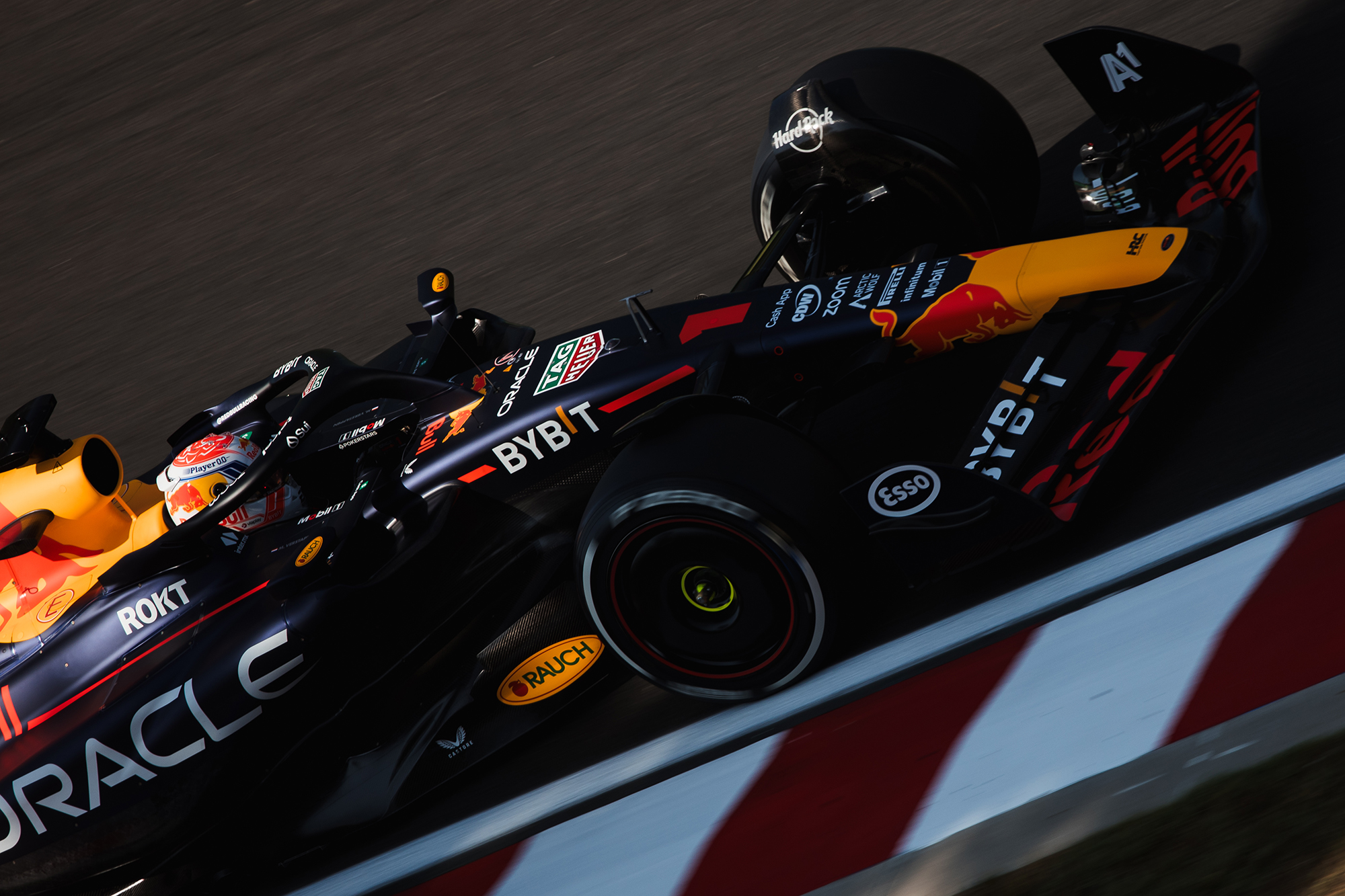
It will also benefit from managing the higher radiator spillage that occurs on faster circuits, and because of the faster nature of the track it will once again resort to the normal smaller cooling exits we have seen in previous races which again at high speed will generate more radiator spillage.
I would call this more of an investment in your future rather than expecting a return on it this weekend. And perhaps that’s reflected in what was a difficult qualifying session for Max Verstappen as he struggled to find a consistent balance.


